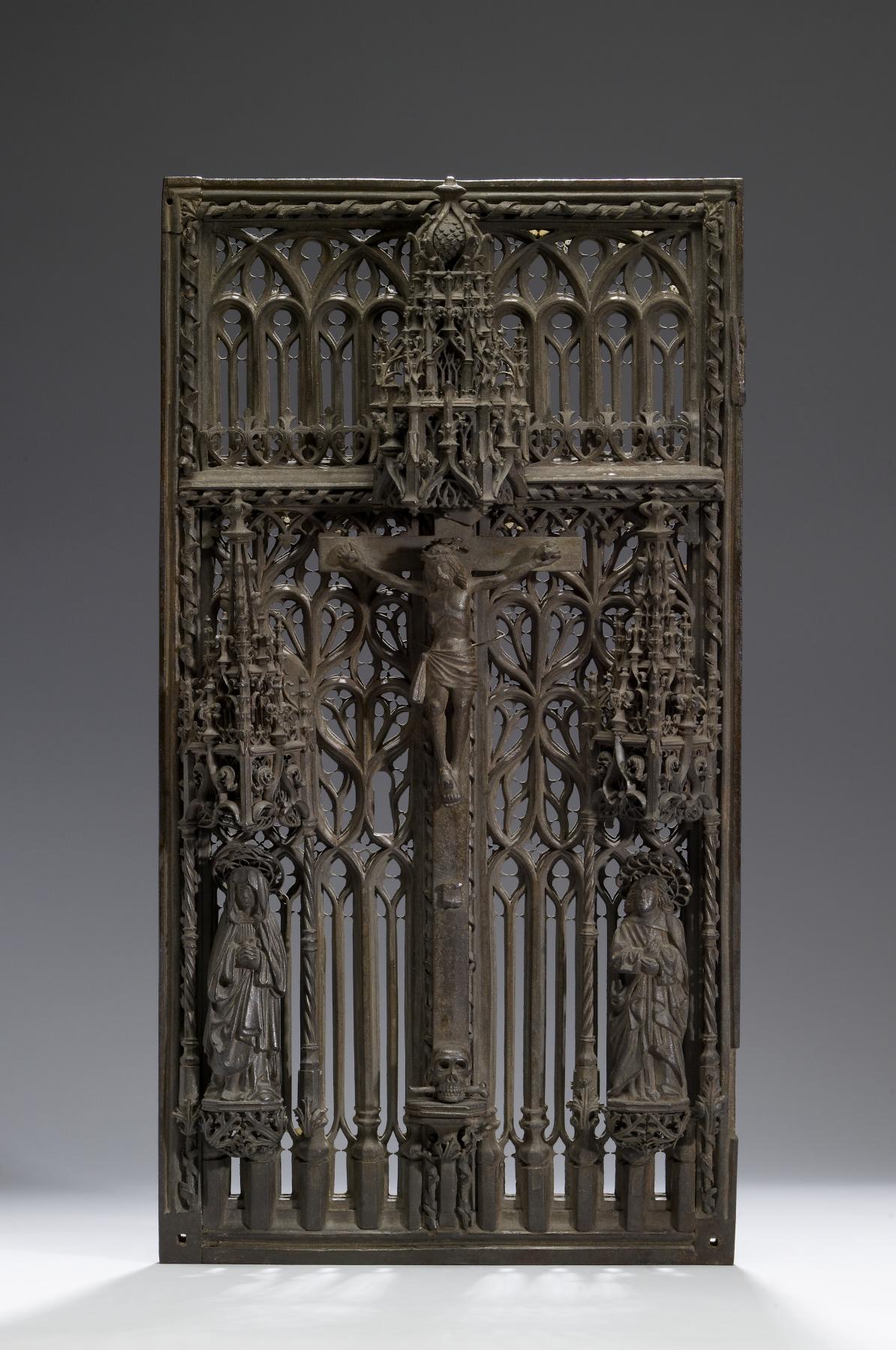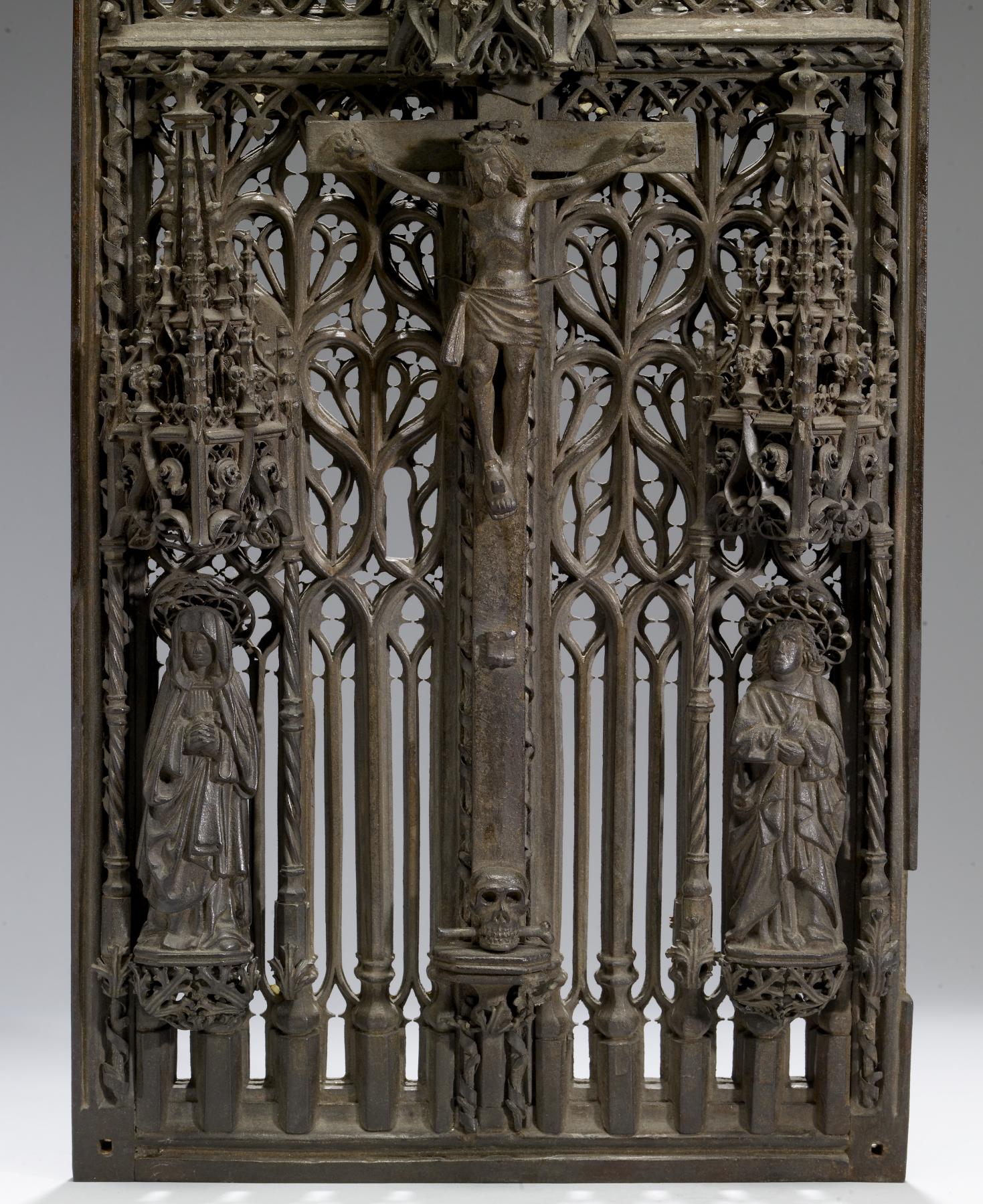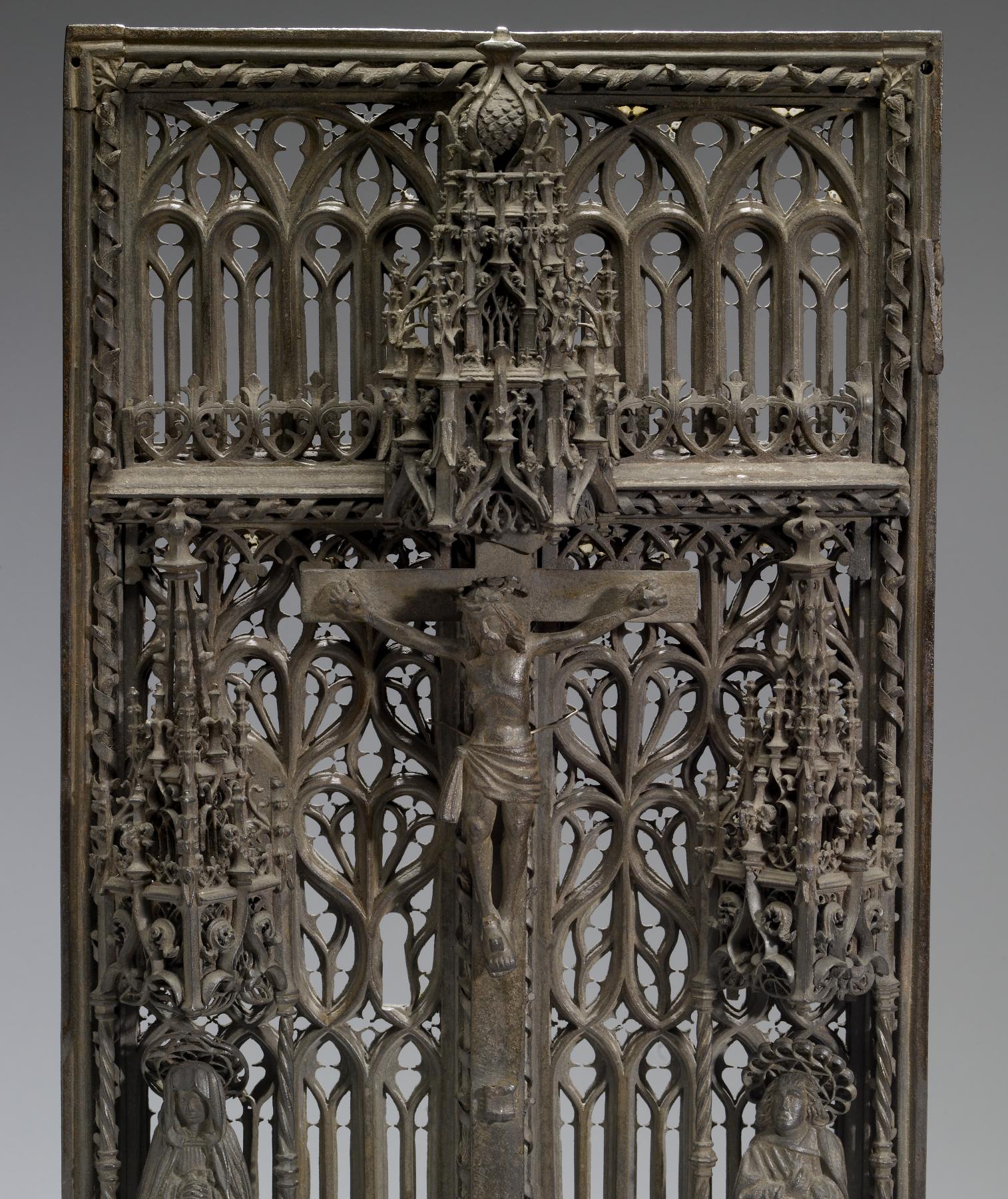Tabernacle Door
(Medieval Europe )
Christ on the Cross with the grieving figures of the Virgin and St. John is depicted on this door from a tabernacle (cabinet that holds the Host, or consecrated wafer for the Mass). Since the Mass is understood as a ceremonial re-enactment of Christ's sacrifice, the imagery is appropriate for the function of the tabernacle. The skull at the foot of the cross identifies the site as Golgotha, the "Place of the Skull," and refers as well to the legend that this was also the site of Adam's burial. The flamboyant style of the architectural details, consistent with church architecture of the time, does not detract from the solemnity of the Crucifix. Given how difficult it is to work iron, the skillful handling of the intricate detail is impressive.
This was the first medieval object purchased by Henry Walters.
Provenance
Provenance (from the French provenir, 'to come from/forth') is the chronology of the ownership, custody, or location of a historical object. Learn more about provenance at the Walters.
Abbey of St. Loup, Troyes; Debruge Dumesnil Sale, Paris, 184, n. 1431; W. H. Forman Sale, London, June 19, 1899, lot 541; Henry Walters, Baltimore, 1899, by purchase; Walters Art Museum, 1931, by bequest.
Conservation
| Date | Description | Narrative |
|---|---|---|
| 3/23/1955 | Treatment | cleaned |
Geographies
France, Champagne (Place of Origin)
Measurements
H: 19 x W: 10 3/16 x D: 2 9/16 in. (48.3 x 25.8 x 6.5 cm)
Credit Line
Acquired by Henry Walters, 1899
Location in Museum
Centre Street: Third Floor: 15th-Century Art of Northern Europe
Accession Number
In libraries, galleries, museums, and archives, an accession number is a unique identifier assigned to each object in the collection.
In libraries, galleries, museums, and archives, an accession number is a unique identifier assigned to each object in the collection.
52.103








